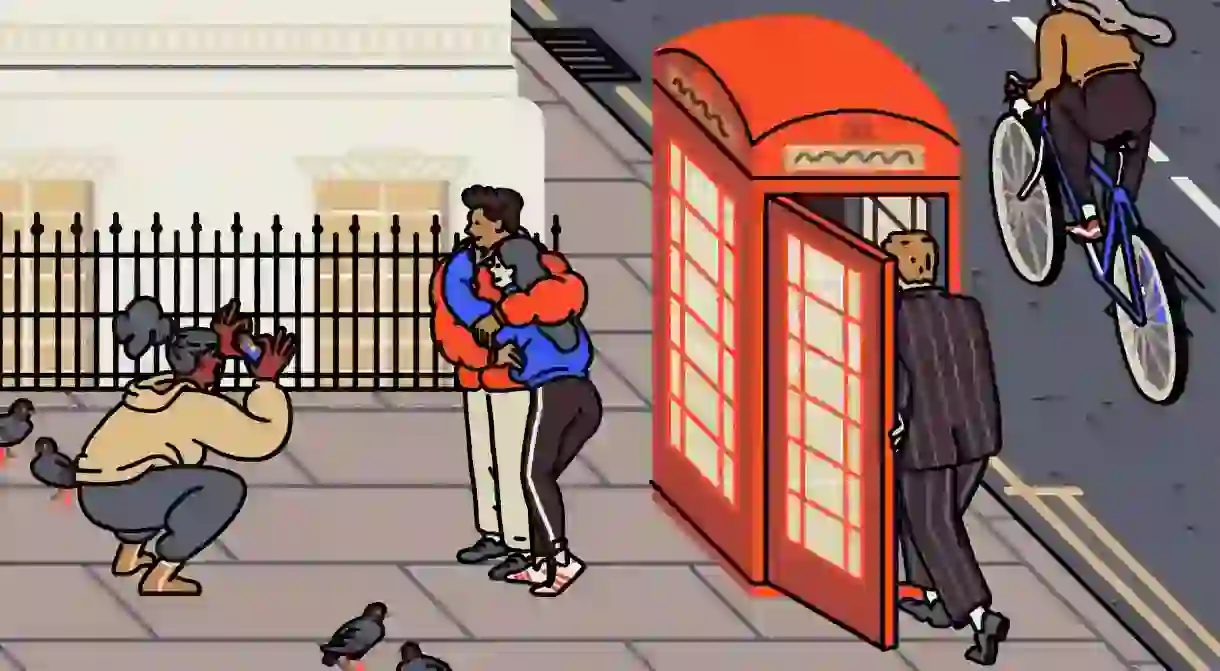London Icons: The Red Telephone Box

The digital revolution may render the iconic red telephone box redundant, but it’s still one of the most enduring symbols of London and the United Kingdom today.
It’s hard to pass a red telephone box without feeling a twinge of admiration. Standing proud on London’s street corners, these eight-foot-tall beacons conjure a romanticised vision of the United Kingdom: a world of tea-taking and flag-waving. Indeed, the best-known iteration of the phone box – the prosaically named Kiosk 6 (K6) – was commissioned to celebrate King George V’s Silver Jubilee in 1935.

The K6’s origins can be traced back to the Post Office, which, in the 1920s, doubled as the UK’s telephone company. In search of a public phone box befitting the nation, the Post Office commissioned Sir Giles Gilbert Scott, the architect behind London landmarks Battersea Power Station and Bankside Power Station (now home to the Tate Modern). Scott’s dome-topped K2 design was the forerunner of the red telephone box with which most people are familiar.

Scott’s initial design was a big hit with Londoners, but it was pretty immense – twice as heavy as a grand piano. An opportunity arose in 1935 for Scott to design a new kiosk to commemorate the Silver Jubilee of King George V; he replaced it with a daintier version that was 25 percent lighter. This streamlined K6 became the capital’s most iconic telephone box – so popular that 60,000 were installed all over the UK, with some even making it as far as the streets of Malta, Bermuda and Gibraltar.

While the bright red K6 remains Britain’s most ubiquitous design, other, less successful models were also produced. There’s a rare cream-coloured K3 phone box, which can still been seen beside the Penguin Beach exhibit at ZSL London Zoo. A K4, which incorporated a handy post box and external stamp machine, was also introduced for a short time. However, it turned out the clunky machines disturbed phone users and the rolls of stamps would often get damp and sticky in London’s notoriously rainy weather.

The need for public phones dwindled in the 1980s and London’s boxes fell victim to vandalism and dubious adornment thanks to the city’s red-light districts. But a potentially worse fate awaited them: in 1980, British Telecom (BT) took over responsibility for telephone boxes, and it was announced that all the kiosks would be repainted yellow. Naturally, sections of the British public were opposed to the decision, with the Daily Mail newspaper campaigning against “the yellow peril”. While 2,000 of the red telephone boxes were spot-listed and therefore saved, a large number of the original K6s were eventually replaced with BT’s KX100 – a fortress of steel and toughened glass with all the practicality but none of the pizzazz of its glamorous scarlet cousin. In fact, its “vandal-proof” design proved even more alluring to those it was meant to repel, and the KX100s became battered urban eyesores, with many being replaced, ironically, by restored K6s.

A trend for repurposing K6s has kicked off in recent years due, in part, to BT’s Adopt a Kiosk scheme. Curious iterations of the K6 have cropped up across Britain in true make-do-and-mend spirit, from mini lending libraries and defibrillator booths to ever-changing art exhibitions. While the age of the smartphone might render these classics obsolete in one sense, they are an ingrained part of British culture. It’ll be a long time before the red telephone box loses its novelty factor.














